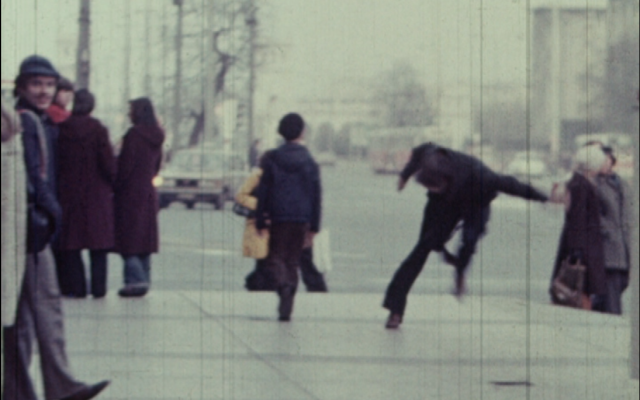There are all indications to believe that in the last couple of years we have finally experienced our own performative turn! Or even, one would like to say, a choreographic turn. But for all the enthusiasm for this long-awaited revolution, one can hardly resist the impression that so far it has changed little in the situation of Polish choreography, whether in terms of its existence or status. And that even if a call for choreographers can be heard ever more clearly and more frequently these days at prestigious galleries, art centers, and in recent seasons, especially in theater – is it a call for choreography as well? It seems that, eager to try previously unavailable or hardly available opportunities, dance artists will very easily – and more or less deliberately – accept the role of the poor cousin at the service of the other disciplines. As a result, despite growing (but probably still highly superficial) recognition, they have grappled with the same issues: a lack of professional production possibilities tailored to the needs of a growing community; a lack of dedicated presentation spaces; a lack of long-term support programs, not only for young artists but also for those who have already debuted and should have a chance to fully realize their potential. At the same time, one can hardly resist the impression that as a community – and I say this as one of its members, with nearly 15 years of experience working for the development and autonomization of this art form – we have failed so far (and these are generations already) to answer the question (and convince others) why choreography appears to be one of the most interesting areas of research in the performing arts today. I am actually not sure we know the answer ourselves. The stakes are high: it may turn out very soon that the newfound focus on choreography, the whole choreographic turn, has been but a short-lived fad, an import from the West, a momentary bauble, a key moment we have been unable to turn into something more permanent, something that would allow us to at least seriously scratch the glass ceiling. Especially that, on the wave of policy shifts negatively affecting progressive theatrical (and other) institutions, the latter will soon start closing again for dance. How much are we co-responsible for that, having for years (and to no avail so far) wrestled with our own artistic identity? Can the performative turn become our springboard to independence? An independence that will allow us to practice choreography as an autonomous art? And not only (literally and metaphorically) in the peripheries?
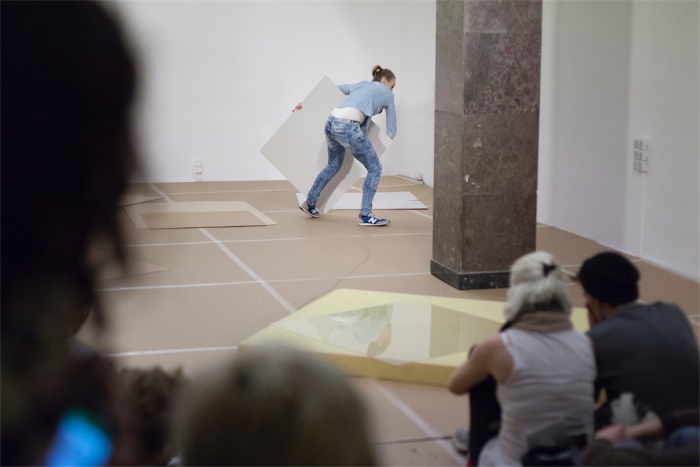
Magda Ptasznik, Surfing, Centrum Sztuki Współczesnej Zamek Ujazdowski, 2014. Zdjęcie: Bartosz Górka
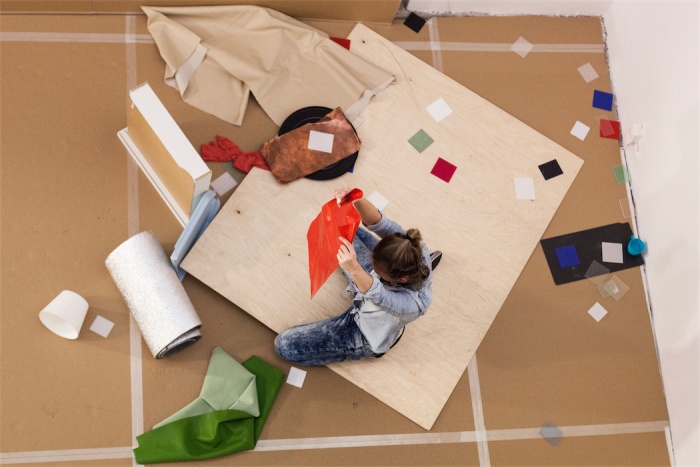
Magda Ptasznik, Surfing, Centrum Sztuki Współczesnej Zamek Ujazdowski, 2014. Zdjęcie: Bartosz Górka

Magda Ptasznik, Surfing, Centrum Sztuki Współczesnej Zamek Ujazdowski, 2014. Zdjęcie: Bartosz Górka
I am asked such questions quite regularly in various contexts, including international ones, and it has been increasingly clear to me that the crux of the problem lies in the fact that we have been pretty stubborn in not studying, writing and re-writing a history of 20th-century and recent Polish dance and choreography, a failure that weighs on us like unfinished homework and which has to be addressed if we are to move forward and be promoted to the next grade. Without acknowledging our own roots, investigating the not-so-few phenomena, analyzing the causes of the often ostensible absence of other ones (so well recognized in the international context), and finally without critical reflection on how our own artistic tradition (not only that of dance) can inform contemporary choreographic practice and reflection – without all that, it seems to me, we will remain but poor cousins of other artistic disciplines, belated copycats of Western achievements, at best an up-and-coming regional side dish to a now official global performative banquet (all the Golden Lions at this year’s Venice Biennale went to contemporary choreography and dance artists!).
In the art-historical discourse, we have familiarized the narrative of Poland’s leading position in dance in the 1920s and 1930s, when Warsaw was one of the main hubs of expressionist dance, on a par with Berlin and Vienna. We have, however, failed to deepen and popularize the knowledge, let alone reflect critically on it. Nor have we addressed the gap that the period of our Cold War-era isolation from the West has left in the continuity of the choreographic narrative. A period during which America saw a genuine dance revolution (the postmodern dance of the 1960s and 1970s) and when contemporary choreography was born, in Europe popularized in earnest by the generation of conceptual choreographers from the early 1990s, a time when we were only learning a new way of life in the shadow of the ruins of the Berlin Wall, and dance was dominated by a generation of artists obsessively preoccupied with a form known as dance theater (which, however, only shared the name with Pina Bausch’s canonic Tanztheater). A struggle over its understanding and recognition dominated the Polish dance discourse in the 1990s and, in some places, continues to this day. As a result, the energy needed for constructive reflection is still wasted, especially in domestic debates, such as the biannual Polish Dance Platform, on mulling over the long passé and anachronistic question of the boundaries of dance. That dance and choreography are not one and the same thing is still not clear to everyone, as suggested by the mantra, repeated for decades, often without much deeper thought, that the “missing link in the development of Polish dance is the theater of Grotowski and Kantor.” The very act of comparing the two, and that in the context of theater and dance, seems rather risky. But a more serious problem is that no academic study has yet been written to support the argument. It is not clear how much the myth was motivated by a burning need to find a recognizable reference for one’s own discipline and a desire to bask in the glow of internationally acclaimed phenomena, especially that the body as a performative instrument and a non-verbal (and thus hardly censorable) means of communication played, as we know, an important role in them. One thing is certain: the consequences of that particular narrative continue to be acutely felt to this day, being responsible for the persistent stereotype that binds dance and choreography to theatre, a stereotype that all those fighting for the autonomy of dance have to confront. In this context, it is interesting to note that in 2010 official policy shifted that affiliation to music. The founding of the Institute of Music and Dance has forced the two disciplines, both surprised by the fact, to seek a common modus vivendi, but has failed so far to provoke a serious debate on actual linkages between contemporary choreography and contemporary avant-garde music, even if none else but John Cage was the much-adored spiritual patron for artists of the postmodern dance generation and an inspiration behind many of their choreographic strategies.
Interestingly, the widespread voices suggesting “missing links in the development of Polish dance,” though they sometimes made casual mention of the “Polish alternative theater tradition,” never directly referenced one of that tradition’s most interesting protagonists, Akademia Ruchu. Perhaps because the group, founded and led by Wojciech Krukowski, was for years known chiefly for its street performances and as a “theater of visual narration,” with visual artists in its line-up, was perceived by 1990s Polish dance artists primarily as a phenomenon from the obviously uninteresting and distant field of the visual arts – which, again, is very close to contemporary choreography, with its roots in the practices of the American neo-avant-garde. In a collection of essays, published barely two years ago, devoted to Akademia Ruchu’s key performances (Akademia Ruchu. Theater., ed. Tomasz Plata, 2015), virtually every single example seems perfectly compatible with the global history of contemporary choreography (and even dance theater!) as well as representing an intriguing and fascinating example of how revolutionary avant-garde trends that emerged in New York in the 1960s and 1970s, widespread throughout the Western art world, almost immediately found a unique form and realization in Poland, one that has lost virtually none of its currency in the decades since. And as such, having the potential of becoming an important reference for those young Polish choreographers who feel no affinity with the Tanztheater tradition and who learned about postmodern dance indirectly, from “translations” by European non-dance artists of the 1990s fascinated with the performative practices of The Judson Church Theater. Seen from this perspective, Akademia Ruchu could help to fill the gap left in the history of Polish dance and choreography by WWII and the Cold War. Could it also become an inspiration? And if so, in which of its aspects?
When viewing recordings of Akademia Ruchu’s performances today, connotations with the choreographic revolution of post-modern dance seem obvious. But the Polish reception of that breakthrough, popularized only recently, has for years been oversimplified (which is hardly surprising given that Sally Banes’ classic Terpsichore in Sneakers, published in 1980, was translated into Polish only in 2014).1 In its popular version, the story of postmodern dance has usually been reduced to several key elements, notably the slogan of the “democratization of dance,” a direct consequence of which was dance artists’ preoccupation with quotidian, ordinary movement. Refuting the alleged exclusivity of modern dance and contesting the notion of choreographic virtuosity, it became a radical proposition of expanding the vocabulary of dance to include ordinary, everyday activities such as running or walking. But the point was not just to co-opt unwanted gestures that had been missing from dance in order to fulfill the avant-garde’s original dream of integrating art with life. And not just to create an egalitarian community of actors and spectators. It was also to teach a new way of looking at dance which, as Yvonne Rainer stressed, “is hard to see” (which in this case also means “to understand”). Moreover, Rainer proclaimed: “I want my dance to be a superstar!” which led to breaking away from traditional narration and, as John Cage prescribed, divesting dance of its cause-and-effect binder, separating it from the author, making it an autonomous object; it was also as an object that the human body was treated, especially during the analytical period of postmodern dance (1963–1968), becoming subject to literal, concrete manipulations. Removed from its natural context, shifted from theater first into the empty space of the studio and gallery and then also into public space, the works of The Judson Church artists helped to acknowledge the silent intelligence of the body as it was involved in uncomplicated, seemingly obvious, physical actions. The focus thus changed from the what to the how. By deliberately exposing the choreographic seams, focusing on simple tasks, revealing the principles of movement, and finally identifying structure with the choreography itself, a framework was created that ennobled the moving body, elevating it to the level of an object that was worth looking at as any other art object.2 Most importantly, the beholder’s attention was shifted to the previously ignored, omnipresent – now directly visualized – choreography of everyday life. One of the pivotal events in this context was Trisha Brown’s famous 1970 performance piece Man Walking Down the Side of the Building from the Equipment Pieces series, where the viewers gathered in a New York street witnessed a re-enactment of the “act of walking,” performed in tense silence and in an unusual orientation to the force of gravity. Equipped with climbing gear, like an equivalent of Cage’s prepared piano, a dancer is walking down a vertical wall, evincing walking as a complex physical artifact, requiring effort and special bodily organization. According to Susan Rosenberg writing in a book on Brown’s 1970s work, “everyday movement is revealed as a series of minute physical choices and cognitive-kinesthetic negotiations necessary to execute actions that are assumed to be ‘natural,’”3 a movement that we normally pay no attention to at all. Its unique organization becomes in front of our own eyes an act of choreography, which lays its components bare for us to see. The reorientation of the body’s vector relative to gravity allowed the choreographer to turn ordinary movement into something extraordinary and ultimately abstract, and to fundamentally transform the beholder’s phenomenological experience of reality. It also made it possible to demonstrate the cognitive and motoric complexity of both making as well as watching and performing movement and dance. Brown’s piece, coming less than two years after the historical, widely publicized (and, as is suspected by some today, faked) landing on the Moon, coincided with heightened interest in zero-gravity, weightlessness, spatial coordination, and movement as something dependent on external, often unnatural, conditions. Located in the middle of a blighted neighborhood, experiencing the results of an acute economic recession, the act of walking down the side of the building, the dancer’s visible effort, and a palpable sense of danger (the performer’s security was literally in the hands of two high-altitude workers belaying him from the roof) all became a representation of the experience, shared by the largely random audience, of ostensible balance – a metaphor of the condition in which they had all found themselves, also socially.
At this point I am reminded of ordinary-looking people stumbling for unexplained reasons in a series of performances organized by Akademia Ruchu in the late 1970s in several Polish cities, in places attracting large, passive, random audiences: bus stops, parks, street intersections. Stumble caught people by surprise, forcing them to react, amusing them, but also provoking reflection, introducing a sense of anxiety caused by the unexpected, the unrecognized, the unobvious that literally (and metaphorically) trips you up, upsets your balance. A less than a minute-long video documenting the action, recorded at the corner of Aleje Jerozolimskie and Nowy Świat Street in Warsaw, makes a particularly strong impression: a soundless recording, presented on the small screen of a gallery monitor, consisting of a montage of short sequences – repetitions of the same action – successive “stumbles” performed by seemingly ordinary pedestrians. The recording’s unnatural silence enhances a sense of tension that must have also been felt by those witnessing the ultra-short (usually lasting no more than a couple of minutes) choreographies of postmodern artists, performed in “Cagean silence.” Such a format of presentation made it possible to focus completely on movement and its organization – on choreographic objects exposing their own form, engraving themselves, like paintings, in the viewer’s memory, often unbeknownst to him. Similarly, the viewing of Stumble is accompanied by a heightened focus on the action and all the participants of the recording – the potential performers. At the same time, we derive particular pleasure from watching a physical gesture of such a low rank, a misstep, and the extraorganization of the situation. What is left is a sense of confinement, suspension of time, or paradoxical immobilization in a moving image, or perhaps of fixation on a gesture of disobedience to reality, a gesture effected by artists where we don’t expect it at all.
It was for a reason that the exhibition Let’s Dance held at the Art Stations Gallery in Poznań in 2015, a presentation devoted to the intense relationship between choreography and the visual arts as well as the observed, or rather noticed (in the sense of being seen), presence of dance – movement – choreography in all areas of our life, featured precisely fragments of Stumble rather than excerpts from Akademia Ruchu’s later, more “dancy,” or rather choreographic, shows. No less significant in this context is Akademia’s other work shown in Let’s Dance, a recording of Vigil II, an action executed at the Fama Festival in Świnoujście in 1977, where the participants, or “performers,” spent half an hour in a concrete parking lot, immobilized in poses imitating those of holidaymakers sunbathing in a nearby beach. Re-creating sunbathing bodies in a concrete lot, shifting them from their “natural” seashore context into a strange, unfriendly, un-human environment, Akademia achieved a kind of estrangement effect, the new context calling up inevitable and disturbing associations with mass extermination or constituting a particular memento – suggesting its premonition.4 Through the simple change of context and the direct radical combination of both images in a recording that was originally screened in public space, on building walls, the seemingly neutral, and for many clearly pleasant, experience can be seen (again!) in a whole new light. By dint of an artistic gesture, the ordinary, natural, and obvious becomes unnatural and unobvious – evident and specially organized, and as such metaphorized, poetic, effectively causing a reaction: ambiguous, and, more importantly, suddenly not indifferent. How much the early street experiences informed Akademia Ruchu’s mature performance work from the 1980s (such as the groundbreaking – and very choreographic – Other Dances) is something that Tomasz Plata discusses in his introduction to the aforementioned volume. According to him, the maturity and intensity acquired by the ensemble through street actions resides precisely in moving away from direct quotations of the everyday reality and opting instead for a consciously – with choreographic precision, one might say – constructed stage metaphor. The strategy of simultaneously exposing the seams and evincing the structure of composition, the use of rhythmicized material – removed from its natural context, organized in a particular way, but still easily recognizable, common to everyone, originally colloquial – to produce physical as well as visual (yes!) metaphors correctly diagnosing the individual and collective condition – all this brings Akademia Ruchu very close to the mature work of postmodern choreographers, i.e., that from the post-analytical period that stretched throughout the 1970s.
Rather than turning their back on reality (a sin committed by so many contemporary experimental artists), the post-moderns as well as Krukowski’s troupe prefer to artistically and critically transform it in order to render visible (noticeable and comprehensible) its governing mechanisms; this seems to me to be one of the most valuable lessons they have left for contemporary choreography. So framed and realized, this “tactic of manifestation,” if simultaneously construed as a practice of counter-visualization, of creating new ways of seeing and being seen, inscribes contemporary choreography in the field of both visual culture and visual activism (as researched and described by Nicholas Mirzoeff).5 And it is precisely such political (in the Rancièrean sense) practices of “unseeing” naturalized ways of perceiving the body and the world to create new (self)representations that constitute the most interesting area of choreographic experimentation globally. Interestingly, many exciting examples of such practices can be found in the Polish pre- and post-war tradition, waiting to be rediscovered in a whole new context (to mention but the interwar avant-garde, the fascinating theories of Oskar Hansen, or the Polish critical art of the 1990s). It seems that with the youngest generation of artists and researchers, we are now in the unprecedented situation of having the potential, both artistic and critical, to embrace them firmly and make them part of our own choreographic identity.
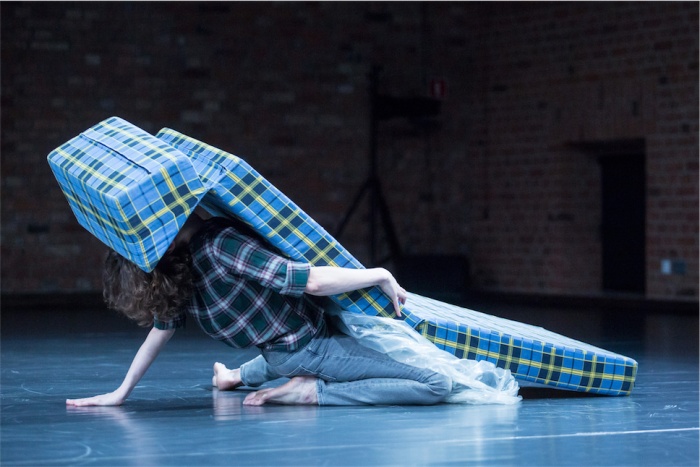
Marysia Stokłosa, Intercontinental, 2015. (c) Jakub Wittchen dla Art Stations Foundation by Grażyna Kulczyk
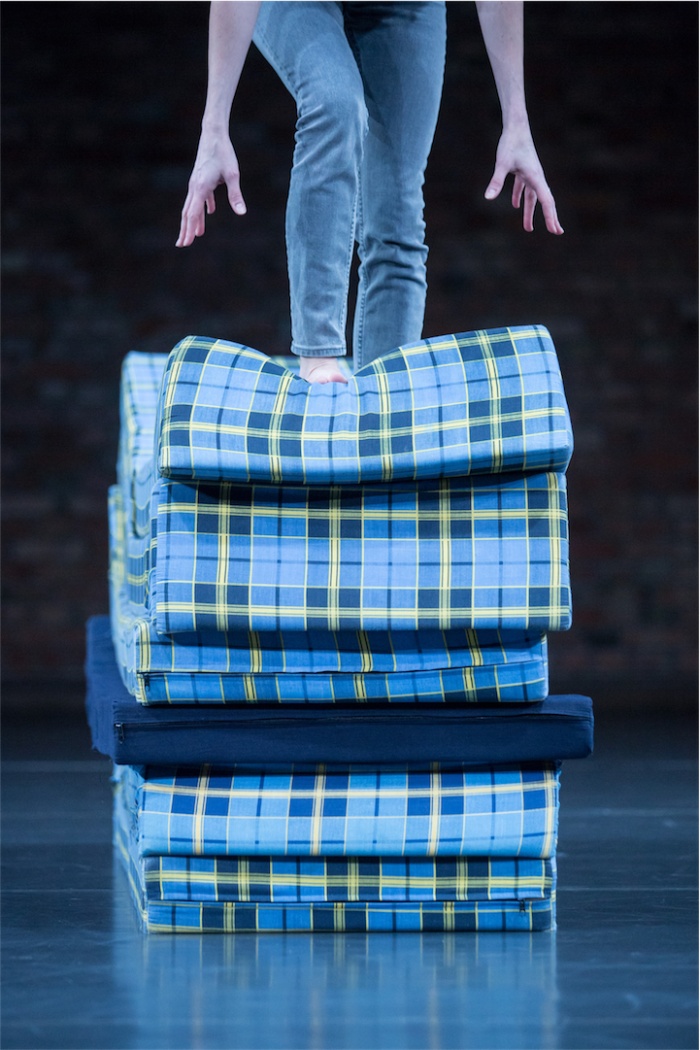
Marysia Stokłosa, Intercontinental, 2015. (c) Jakub Wittchen dla Art Stations Foundation by Grażyna Kulczyk
These are practices situated in the “crack between the visual arts and dance,” as Trisha Brown said of her works from the 1970s. In the Polish context, one should add, also that between dance theater and theater as such. In a cleft we could inhabit and make an increasingly visible space of the autonomous art of choreography. And which could become something even more interesting than a scratch on the glass ceiling, or a crack that we are trying (and with some successes recently) to push your finger into. That, however, would require us to shift our adopted course of self-reflection and action: from the vertical knocking at the ceiling to the horizontal development of the space between. It would require, quite simply, a radical choreographic shift.
Joanna Leśnierowska
Translated from the Polish by Marcin Wawrzyńczak
BIO
Joanna Leśnierowska is a dance curator and choreographer; curator, since 2004, of the Old Brewery New Dance program at the Art Stations Foundation in Poznań. She has collaborated with numerous Polish and international artists, and since 2011 has also pursued her own choreography projects.
1 Sally Banes, Terpsichore in Sneakers: Post-Modern Dance (Middletown, Connecticut: Wesleyan University Press, 1987).
2 One of the most interesting manifestoes of a new dance revolution is Yvonne Rainer’s essay on her now cult choreography, Trio A; cf. “A Quasi Survey,” published in Minimal Art: A Critical Anthology, Gregory Battcock, ed. (New York: E. P. Dutton, 1968).
3 Cf. Susan Rosenberg, Trisha Brown: Choreography as Visual Art (Middletown, Connecticut: Wesleyan University Press, 2016).
4 One can hardly shake off the impression that a foreboding had turned almost into a prophecy when the body of a three-year-old Syrian boy was washed ashore in Turkey, the image soon becoming one of the most poignant symbols of the refugee crisis. I fancy that among its countless artistic representations, the Moroccan Tribute to Aylan Kurdi, where a crowd of people gathered on the beach to assume the dead boy’s iconic pose, refers us straight to Vigil II and could become an inspiration for another Akademia Ruchu performance.
5 Cf. Nicholas Mirzoeff, How to See the World (London: Pelican, 2015).



